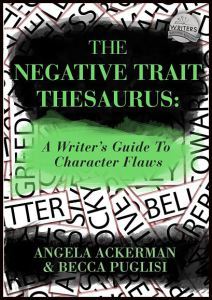The Subtle Knife: Writing Characters Readers Trust But Shouldn’t
I don’t know about you, but I love reading books where the author encourages me to draw conclusions that are wrong. Case in point–untrustworthy characters who I trust anyway. Like all writers, I am ultra aware of character cues and actions as I read, so when I’m led astray and find out someone I believed to be good really isn’t, I want to cheer and tell the author, “Well done!”
Tricking readers in this manner is difficult.
 In real life, all of us are body language experts. At least 93% of communication is nonverbal, meaning we are very adept at ‘reading’ other people by their mannerisms, gestures, habits and voice changes. In books, this skill allows us to pick up on nonverbal cues which communicate a character’s emotions. Plus, if we are in the dishonest character’s POV, we also have access to their thoughts and internal visceral sensations (heartbeat changes, adrenaline shifts and other uncontrollable fight-or-flight responses). All of this means that tricking the reader can be very tough.
In real life, all of us are body language experts. At least 93% of communication is nonverbal, meaning we are very adept at ‘reading’ other people by their mannerisms, gestures, habits and voice changes. In books, this skill allows us to pick up on nonverbal cues which communicate a character’s emotions. Plus, if we are in the dishonest character’s POV, we also have access to their thoughts and internal visceral sensations (heartbeat changes, adrenaline shifts and other uncontrollable fight-or-flight responses). All of this means that tricking the reader can be very tough.
There are several ways to make the reader believe one thing while another thing is true.
One technique is the red herring. This is where a writer nudges a reader in one direction hard enough that their brain picks up on ‘planted’ clues meant to mislead them. So for example, let’s say I had a character who was a pastor and youth councilor for his church and he spent his weekends working with homeless teens, trying to get them back into group homes. The reader will begin to get a certain image in their mind.
If I then further describe him as slightly bald with a bad taste in fashion (imagine the kind of guy that wears those awful patterned sweater vests) but who has a smile for everyone he meets, it’s a good bet that I’ve disarmed the reader. They’ve written this character off as a nice, honest guy. Even though his life is all about the church, no way could he be the one stealing cash from the collection box, or the man having affairs with depressed women parishioners, or playing Dr. Death by administering heroin to street teens, right?
Another technique is pairing. Similar to a red herring, pairing is when we do two things at once to mask important clues. If, as an author, I show my friendly pastor leaving an alleyway at night and then have a car crash happen right in front of him, which event will the reader focus on? And if later, the police find another overdosed teen nearby as they interview the pastor about the accident, commending him from pulling a woman from the wreckage before the car could explode…would the reader put two and two together? If I did my job right, then no.
 A third technique is to disguise aspects of his “untrustworthy nature” using a Character Flaw. After all, no one is perfect. Readers expect characters to have flaws to make them realistic. If our nice pastor (am I going to go to Hell for making my serial killer a pastor?) is characterized as absent-minded with a habit of forgetting names, misplacing his keys, or starting service late and flustered because of a mishap, later when the police ask him when he last saw dead teen X and he can’t quite remember, readers aren’t alarmed. After all, that’s just part of who the character is, right?
A third technique is to disguise aspects of his “untrustworthy nature” using a Character Flaw. After all, no one is perfect. Readers expect characters to have flaws to make them realistic. If our nice pastor (am I going to go to Hell for making my serial killer a pastor?) is characterized as absent-minded with a habit of forgetting names, misplacing his keys, or starting service late and flustered because of a mishap, later when the police ask him when he last saw dead teen X and he can’t quite remember, readers aren’t alarmed. After all, that’s just part of who the character is, right?
When your goal is to trick your readers, SET UP is vital.
If the clues are not there all along, people will feel ripped off when you rip the curtain aside. Make sure to provide enough details that they are satisfied you pulled one over them fair and square!
What techniques do you use to show a character is untrustworthy? Any tips on balancing your clue-sprinkling so that the reader doesn’t pick up on your deceit before you’re ready for them to? Let me know in the comments!
Image: lllblackhartlll @ Pixabay
The post The Subtle Knife: Writing Characters Readers Trust But Shouldn’t appeared first on WRITERS HELPING WRITERS™.
Writers Helping Writers
- Angela Ackerman's profile
- 1014 followers



